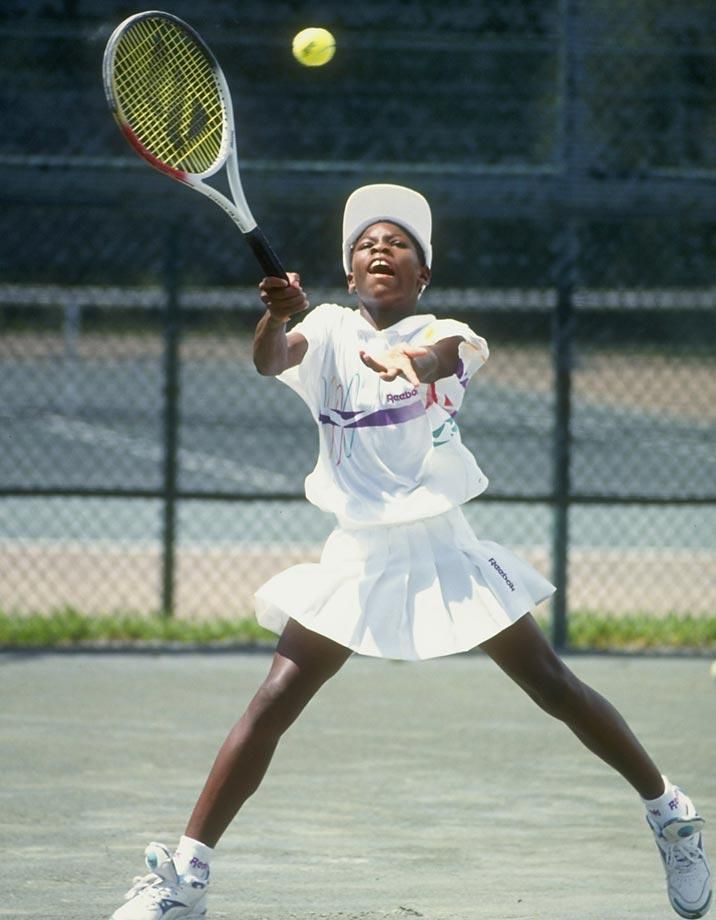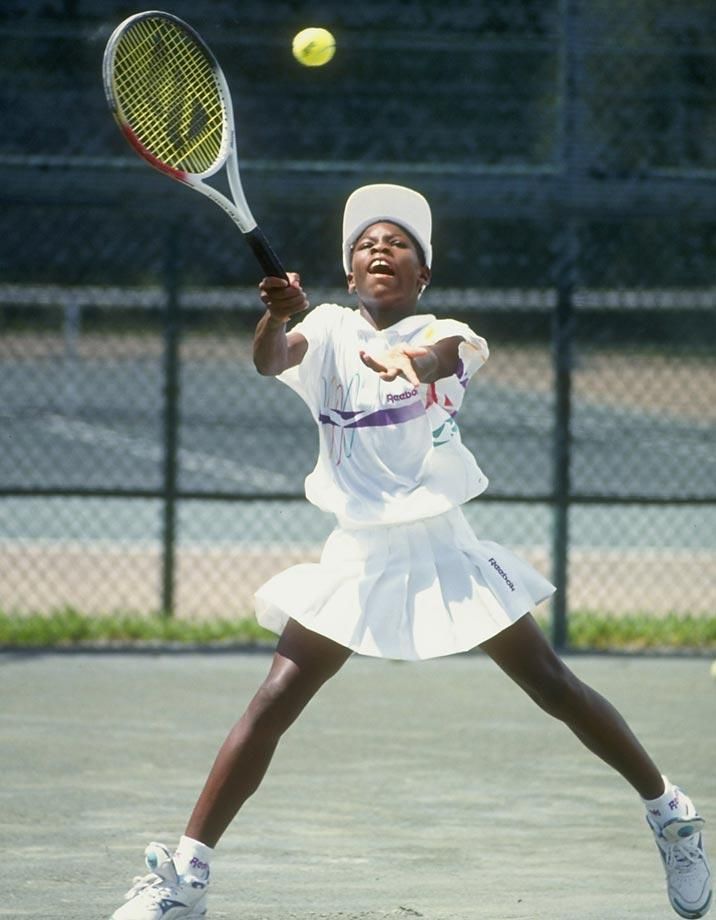In the world of tennis, few names resonate as powerfully as Serena Williams. Her journey from the slums to becoming the world number one is nothing short of inspirational. This is the story of a girl who broke all limits, leaving a strong mark on tennis history.
Born on September 26, 1981, in Saginaw, Michigan, Serena Williams grew up in Compton, California. This area, notorious for its high crime rates and poverty, was far from an ideal environment for nurturing a future tennis champion. Yet, it was here that Serena and her sister Venus began their journey under the watchful eye of their father, Richard Williams.
Richard, a man with no professional tennis background, took on the daunting task of coaching his daughters. He recognized their potential and dedicated himself to their training, often using makeshift courts and second-hand equipment. Despite the challenges, Serena’s talent shone through, and her determination was evident from a young age.

Growing up in Compton, Serena and Venus faced many obstacles. The rough neighborhood was plagued with gang violence and limited resources. Their father’s determination to keep them focused on tennis meant early morning practices and late-night drills, often on public courts that were far from ideal. Richard’s unorthodox training methods and relentless belief in his daughters were instrumental in shaping Serena’s formidable game and mental toughness.
Serena turned professional in 1995 at the age of 14. Her initial years were tough, filled with losses and injuries. However, her perseverance paid off. In 1999, she won her first Grand Slam title at the US Open, defeating world number one Martina Hingis. This victory marked the beginning of Serena’s dominance in women’s tennis.
Her early years on the professional circuit were a learning curve. Competing against seasoned players, Serena had to develop not just her physical game but also her mental resilience. Her breakthrough came with her victory at the 1999 US Open, which made her the second African-American woman to win a Grand Slam singles tournament, following Althea Gibson. This win was a significant milestone, not just for Serena but also for the sport, symbolizing the breaking of racial barriers in tennis.

From 2002 to 2003, Serena achieved what is known as the “Serena Slam,” winning all four Grand Slam titles consecutively – the French Open, Wimbledon, the US Open, and the Australian Open. This remarkable feat established her as the dominant force in women’s tennis. Her powerful serve, aggressive baseline play, and exceptional athleticism set her apart from her peers.
Throughout her career, Serena’s playing style has evolved. Known for her powerful serve and aggressive groundstrokes, she combines strength with tactical intelligence. Her ability to adapt her game to different surfaces and opponents is a testament to her versatility and depth of skill. Serena’s mental toughness is legendary; she has often clawed back from seemingly impossible situations, showcasing her indomitable spirit.
Serena’s journey has not been without its share of adversity. In 2010, she suffered a severe injury, cutting her foot on broken glass, which led to multiple surgeries and a life-threatening pulmonary embolism. Many doubted her return to competitive tennis. However, Serena’s resilience saw her bounce back stronger than ever. Her return to the top of the rankings after such a serious health scare is a testament to her dedication and willpower.
In addition to physical challenges, Serena has faced significant personal losses. In 2003, her older half-sister, Yetunde Price, was tragically killed in a drive-by shooting in Compton. This devastating event deeply affected Serena, but she continued to push forward, using her grief as a source of strength and motivation.
Over the years, Serena Williams has broken numerous records and set new benchmarks in the sport. She has won 23 Grand Slam singles titles, the most by any player in the Open Era, and 14 Grand Slam doubles titles with her sister Venus. Her powerful serve, athleticism, and mental toughness have made her a formidable opponent on the court.

But Serena’s impact extends beyond her athletic achievements. As a black woman in a predominantly white sport, she has faced and overcome significant racial and gender barriers. Her success has paved the way for future generations of athletes from diverse backgrounds.
Serena Williams’ influence reaches far beyond tennis. She is a fashion icon, entrepreneur, and advocate for various social causes. Her philanthropy, including the Serena Williams Fund, focuses on education and community development. Serena’s resilience and success have inspired millions, proving that with hard work and determination, anything is possible.
As a public figure, Serena has used her platform to speak out on issues such as racial inequality, gender pay gaps, and health care. Her outspokenness has made her a role model for many, demonstrating that athletes can use their influence to drive social change. Serena’s advocacy work, particularly in promoting women’s rights and health, underscores her commitment to making a difference off the court.
In fashion, Serena has made a significant impact with her bold and unique style. She launched her own clothing line, S by Serena, which embodies her personal style and empowers women to feel confident and stylish. Her fashion statements on and off the court have challenged traditional norms and celebrated individuality.
In 2017, Serena took a break from tennis to start a family. She gave birth to her daughter, Alexis Olympia Ohanian Jr., in September 2017. Her journey through pregnancy and motherhood added a new dimension to her legacy. Serena’s return to professional tennis after childbirth was nothing short of extraordinary.

Her comeback highlighted the challenges faced by athlete mothers, sparking conversations about the support needed for women balancing motherhood and professional careers. Despite complications during childbirth, Serena returned to the court in 2018, reaching the finals of both Wimbledon and the US Open, demonstrating that she remained a formidable competitor.
As Serena Williams approaches the twilight of her career, her influence on the sport and popular culture remains profound. She continues to compete at the highest level, inspiring both seasoned and upcoming athletes. Her relentless pursuit of excellence and unwavering commitment to her craft serve as a beacon of inspiration.
Looking ahead, Serena’s legacy is secure. Her records and achievements on the court are unparalleled, but it is her impact off the court that will perhaps be most enduring. Serena’s advocacy for equality, her role as a mother, and her entrepreneurial ventures all contribute to a multifaceted legacy that extends far beyond tennis.
Serena Williams’ journey from the slums to world number one is a testament to her unwavering spirit and extraordinary talent. She has not only left an indelible mark on tennis history but has also become a symbol of hope and perseverance for people around the world. Serena’s story is a reminder that no matter where you come from, you can achieve greatness with dedication and courage.
Her career is a powerful narrative of breaking barriers, challenging norms, and pushing the limits of what is possible. Serena Williams stands as an icon of strength, resilience, and excellence, inspiring generations to come. Whether on the tennis court, in the boardroom, or as an advocate for change, Serena’s influence will continue to be felt for many years to come.

